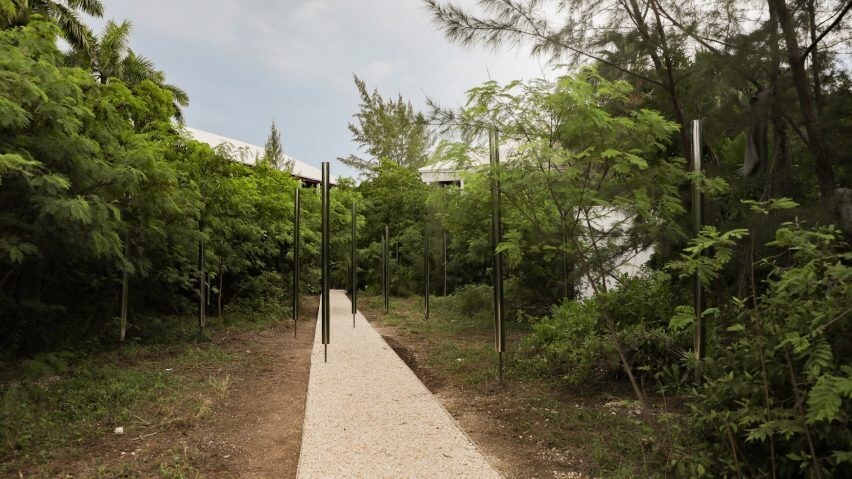

Ghanaian studio Limbo Accra has designed the Duho Pavilion, located on the grounds of a dilapidated hotel in Grand Cayman, Cayman Islands. The Duho Pavilion comprises a collection of 30 reflective aluminium poles arranged around and across the path. This installation is part of Limbo Accra's ongoing exploration of unfinished structures, distinguishing it by existing alongside the ruin rather than within it.

Collaborating with landscape architect Malthe Mørck Clausen, this permanent installation features a winding pebbled path that meanders through the overgrown remnants of the hotel, abandoned for nearly 20 years following hurricane damage.Aluminium's role in architecture enables the construction of taller structures that are more energy-efficient and produce lower CO2 emissions. As the concept of "green building" gains traction, emphasising environmentally friendly and sustainable solutions, aluminium stands out as one of the most sustainable and energy-efficient materials available.
"Inspired by the building's organic transformation as an oasis for plant life and various non-human species, such as frogs, serpents, butterflies and lizards, we decided to shift our focus from the building's concrete shell to the new ecosystem it created. We were interested in the ecological entanglements of the site and how we could integrate this experience into an architectural gesture. Our goal was to create a space that honours the existing landscape, carving a direct path through and installing reflective aluminium poles along it to blend the boundaries of the pavilion and the natural surroundings," said Limbo Accra founder Dominique Petit-Frère.
Designed to pay tribute
The pavilion is designed to pay tribute to the indigenous Taíno culture, drawing inspiration from the Duho, a ceremonial seat crafted by the Taíno people. Each of the 30 aluminium poles in the installation stands three meters tall and symbolises five of the 150 Duho stools found in private and museum collections, including those at the British Museum in London and the Saint Louis Art Museum in Missouri.
"I revisited the stories of my family and looked to the spatial history of the Caribbean region and its indigenous civilisations, particularly the Taínos who occupied Hispaniola – present-day Haiti and the Dominican Republic, Jamaica, Cuba, Puerto Rico and other islands. These Duho stools were integral to Taíno culture, serving as conduits to access ancestors and realms of the real and imaginary, making them the perfect object/device for us to channel a new imagination within this space," added Petit-Frère.
Opened in 2019, the nearby Palm Heights hotel is recognised as the Cayman Islands' first boutique hotel. This beachfront destination features a curated selection of collectable design pieces, including sofas by Mario Bellini, lighting by Ingo Maurer, and rugs by Ettore Sottsass.



Responses






